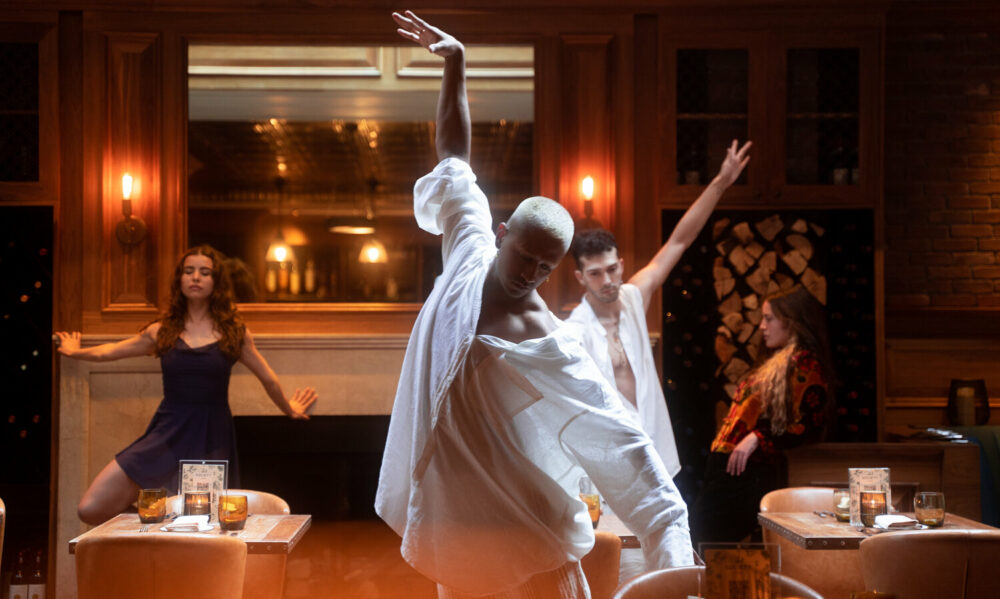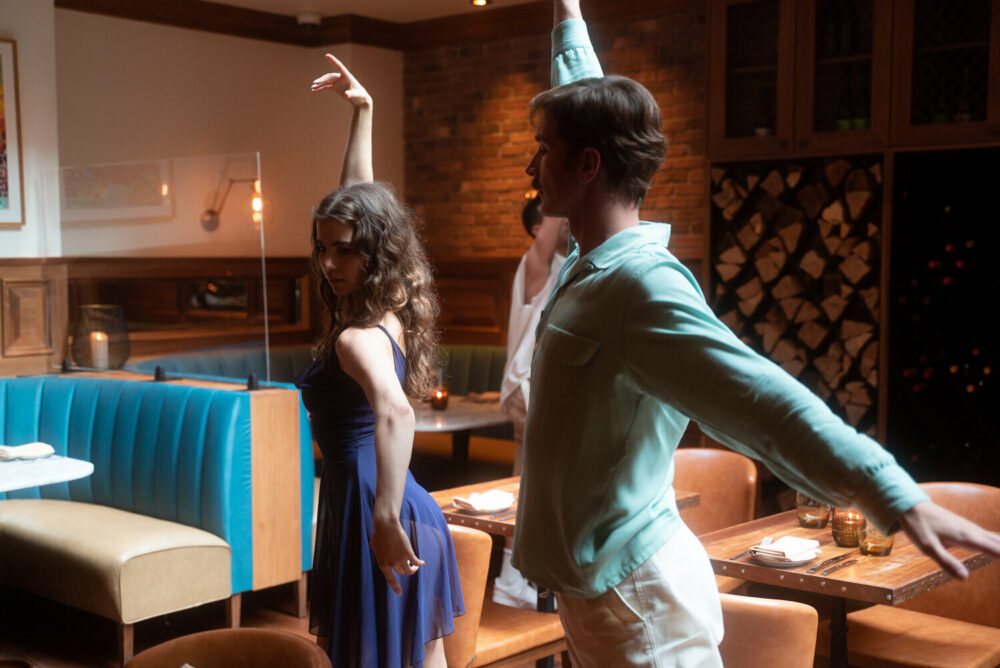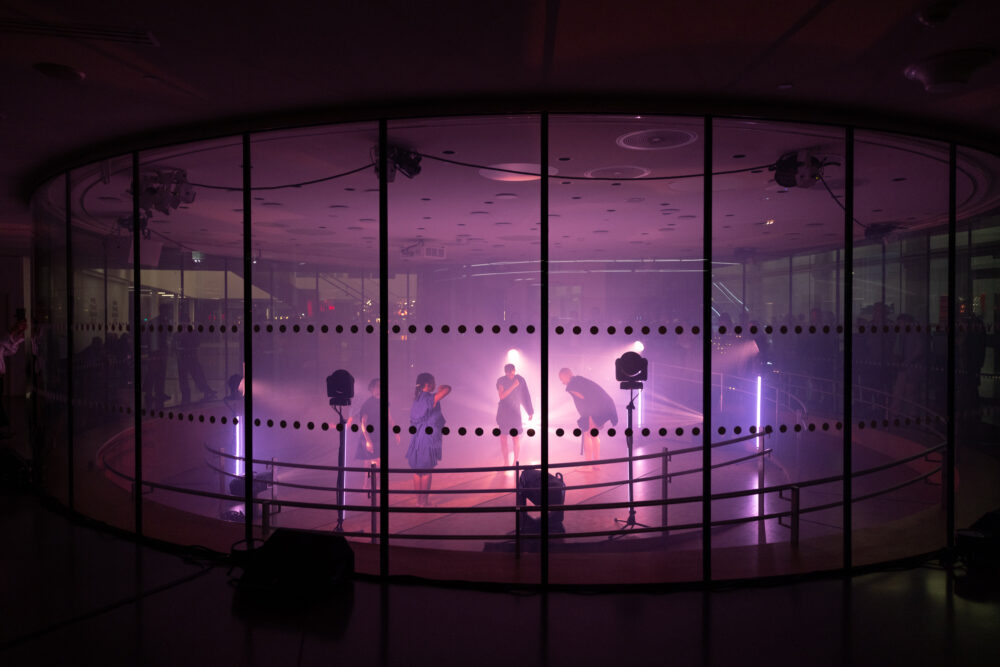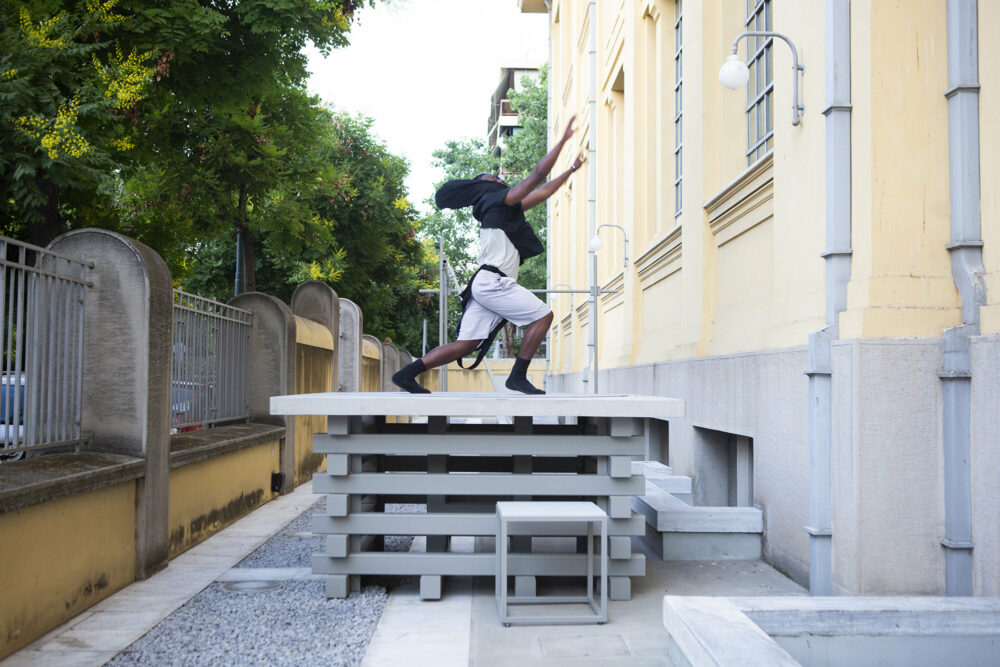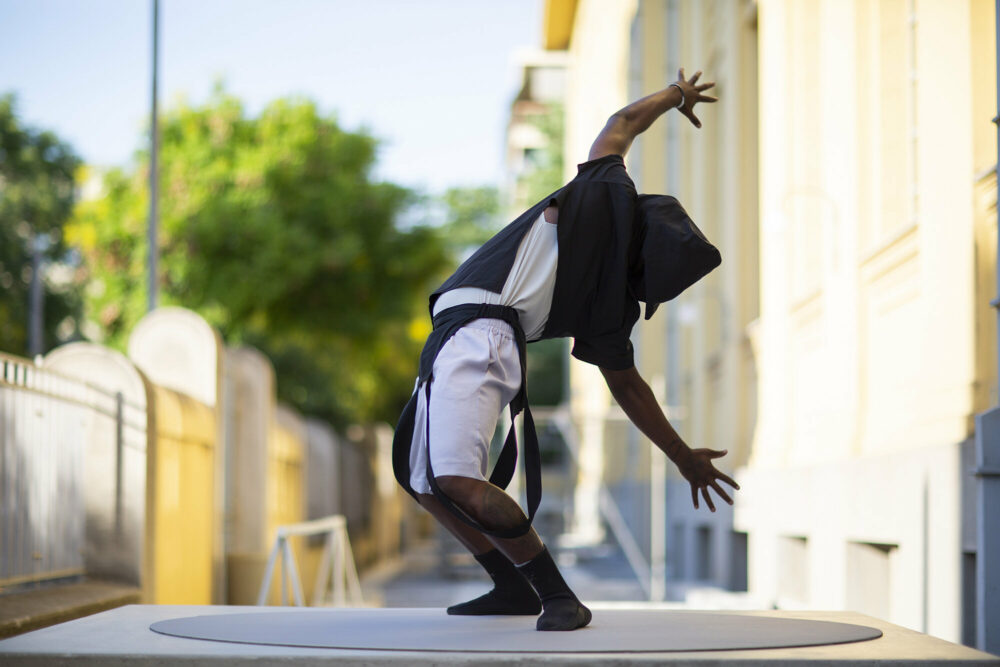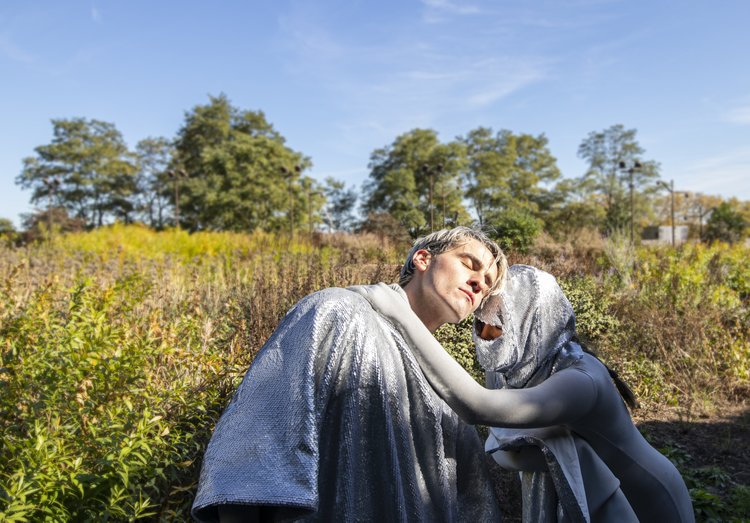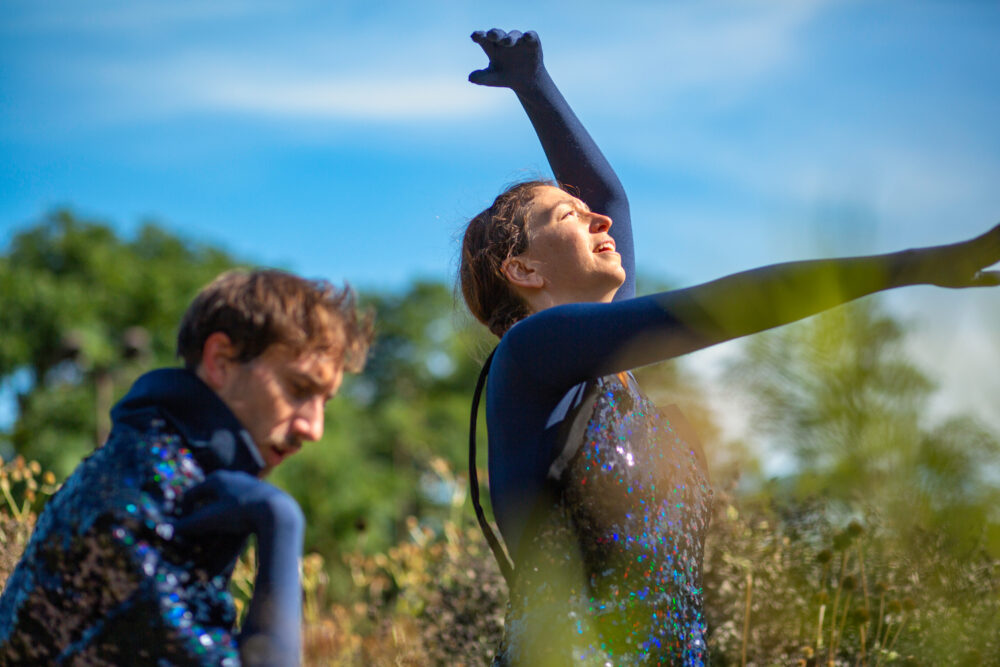“Fernandes and Collins’ work, at this stage in their careers, compellingly communicates their talents, as well as their zeal for pushing the bounds of, and problematizing the reception of, the visual arts object, and in the case of Fernandes its very existence.” – Juror Dr. Romi Crawford
Brendan Fernandes (b. 1979, Nairobi, Kenya) is an internationally recognized Canadian artist working at the intersection of dance and visual arts. Currently based out of Chicago, Brendan’s projects address issues of race, queer culture, migration, protest and other forms of collective movement. Always looking to create new spaces and new forms of agency, Brendan’s projects take on hybrid forms: part Ballet, part queer dance hall, part political protest…always rooted in collaboration and fostering solidarity. Brendan is a graduate of the Whitney Independent Study Program (2007) and a recipient of a Robert Rauschenberg Fellowship (2014). In 2010, he was shortlisted for the Sobey Art Award, and is the recipient of a prestigious 2017 Canada Council New Chapters grant. Brendan is also the recipient of the Artadia Award (2019), a Smithsonian Artist Research Fellowship (2020) and a Louis Comfort Tiffany Foundation grant (2019). His projects have shown at the 2019 Whitney Biennial (New York); the Solomon R. Guggenheim Museum (New York); the Museum of Modern Art (New York); The Getty Museum (Los Angeles); the National Gallery of Canada (Ottawa); MAC (Montreal); among a great many others. He is currently Assistant Professor at Northwestern University and represented by Monique Meloche Gallery in Chicago. Recent and upcoming projects include performances and solo presentations at the Noguchi Museum, New York, NY; The Richmond Art Gallery, Richmond, BC; The National Gallery of Canada and new commissions with The Barnes Foundation, Philadelphia; The DR Vocal Ensemble, Copenhagen, Denmark and a new dance performance with Munch Museum, Oslo, Norway.
“I am a multidisciplinary artist who examines issues of cultural displacement, migration, labour, and queer subjectivity through installation, video, sculpture, and dance. My past life as a dancer, and my experience leaving dance due to injury informs my current performance practice. Working at the intersection of dance and visual art, my pieces open up questions about hybridity of media and seek to problematize the notion of a fixed, essential or authentic identity. Over the course of the past twenty years, I have researched and staged performance interventions in national and international museums, galleries and cultural institutions; facilitated public dialogues on contemporary, everyday socio-political concerns for marginalized communities; and created multimedia projects that rigorously engage with postcolonial and critical theory discourses. I currently based my practice between Chicago, IL where I am faculty in the Department of Art, Theory, and Practice at Northwestern University, and New York City, where I have practiced art full-time for over a decade.
My investment in confronting the complexities of transitional and transnational identities and my interest in incorporating elements of cultural performance into contemporary art arising from my unique cultural background as a Queer, Kenyan-Indian Canadian. I was born in Nairobi, Kenya to a Goan, Indian family. Due to political unrest, my family, who lived in Africa for five generations, immigrated to Toronto, Canada in 1989. My immigration and childhood in Kenya is central to my artistic practice. Interrogating the fantasy of exoticized spaces, cultural tourism, and questions of authenticity with regards to the “African” artifact and souvenirs, brought the notions of ambiguous provenance, hegemony and identity to the fore and set the stage for my current artistic practice.
In my newest work, I am returning to my past life as a dancer. I aim to highlight the various meanings that the body can encapsulate: it is both a kind of object, endowed with cultural meaning, viewed by others and labored on by ourselves. It is also our expressive access-point to the world, constitutive of our subjectivity and selfhood. I investigate how movement techniques are recalled in the body via muscle memory and explore this phenomenon through cultural dance, ballet, and the languages that prescribe directions for dancers to move. Choreography, as I understand it, is a tool for coding and decoding the language of movement. I look at movement through queer and laboring bodies as they relate to the construction of gender roles and physicality. In so, this work continues to engage with the transitional nature of identity, while now exploring how this is enacted and experienced on the level of embodiment.”

